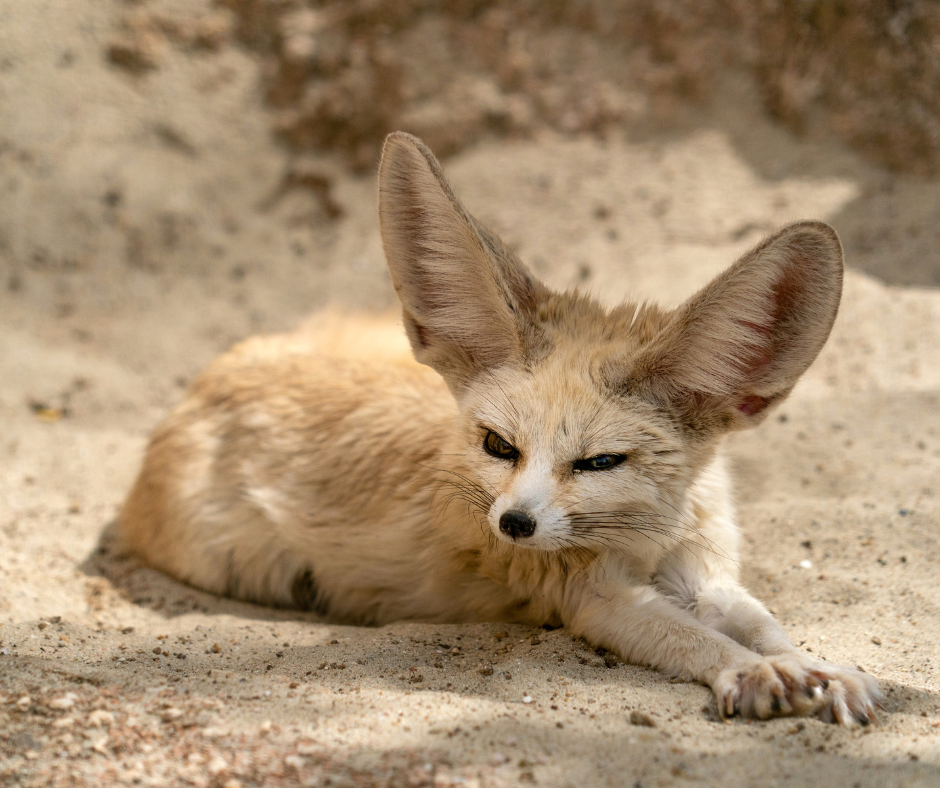The desert biome is home to a unique array of animals that have evolved remarkable adaptations to survive in the harsh conditions of arid regions. Here are some notable desert animals: Camels, with their water-storing humps; Fennec Foxes, sporting oversized ears for heat regulation; Sidewinder Snakes, which move like dancing dunes; Desert Tortoises, masters of water conservation; Kangaroo Rats, with efficient kidneys to minimize water loss; Gila Monsters, venomous yet essential to the ecosystem; Desert Bighorn Sheep, sure-footed climbers of rugged terrain; Jerboas, with elongated legs for swift desert travel; Thorny Devils, covered in spiky armor; and Desert Beetles, experts at capturing moisture from foggy air. Join us as we explore the incredible adaptations of these animals in the desert.
National Audubon Society Field Guide to Desert Animals — The Desert Alphabet Book” (great for kids)
Animals That Live in the Desert – Xerocoles
Animals that are “true desert dwellers” are sometimes referred to as xerocoles. Xerocoles, also known as xerophilic animals, are organisms that have adapted to survive in extremely dry or desert-like environments. The term “xerocole” is derived from the Greek words “xero” meaning dry and “kolein” meaning to inhabit. These organisms have evolved various physiological, behavioral, and anatomical adaptations to cope with the challenges posed by arid conditions.

Xerocoles exhibit a range of adaptations that allow them to conserve water and withstand the scarcity of moisture in their environment. Some of these adaptations include:
- Water Conservation: Xerocoles have efficient mechanisms for conserving water. They may have concentrated urine, reduced sweat glands, or specialized kidney functions that enable them to reabsorb water from their waste.
- Reduced Water Loss: Many xerophilic animals have developed physical features to minimize water loss. These adaptations can include a thick, waxy layer on the skin or specialized scales, feathers, or fur that prevent evaporation.
- Efficient Metabolism: Xerocoles often have lower metabolic rates, which helps them conserve energy and reduce water loss through respiration.
- Behavioral Adaptations: Some xerophilic animals exhibit behavioral adaptations to survive in arid environments. They may be nocturnal, seeking shelter during the hottest parts of the day, or they may burrow underground to escape the heat and conserve moisture.
- Specialized Diets: Xerocoles have evolved to consume diets that require less water. For example, some desert rodents obtain the majority of their water from the seeds they eat, reducing their dependence on external water sources.

Animal Adaptations
However, it’s important to note that not all animals found in the desert are exclusive xerocoles. Some animals may have adaptations that allow them to survive in the desert, but they may also be found in other habitats and environments. These animals are known as “facultative desert dwellers” or “desert visitors.”

For example, certain bird species, like the roadrunner or the Greater Roadrunner (Geococcyx californianus), are considered facultative desert dwellers. While they are well-adapted to the desert and can thrive in arid regions, they are not restricted solely to desert habitats. They can be found in other environments as well, such as grasslands or scrublands.
So, while xerocoles are specialized desert dwellers with specific adaptations, not all desert animals fall exclusively into this category. There is a spectrum of adaptations and habitat preferences among the animal species found in desert ecosystems.
To learn more about desert animals and their unique adaptations, explore the links below.
How Animals Survive In The Desert Video
Trail Cameras with night vision motion activated waterproof to capture desert wildlife at night
Binoculars – lightweight and waterproof for hikers and birdwatchers
List of Desert Animals
Camel – Bactrian Camel (two humps)
Camel –Dromedary Camels (one hump)
Rabbit – Cottontails
Rabbit (Hare) – Jackrabbits

Birds of the Desert
Birds – Hawks & Eagles
Birds – Owls
Birds – Hummingbirds
Birds – Other
Desert Fish
Reptiles & Amphibians of the Desert
Lizards
Snakes
Rattlesnakes (Pit-vipers)
Western Diamondback Rattlesnake
Other Pit-Viper Snakes & Cobras
Python Snakes
Ball Python (aka Royal Python )
Other Reptiles
Toads & Frogs
Fish
Insects & Spiders of the Desert
Bees & Wasps
Beetles
Poster sets of desert animal identification charts
Articles & Content about Animals that Live in the Desert
Find Fossil Insects
Coyote Guide
Coevolution and Mutualism: The Story of the Yucca Moth and the Yucca
Common Reptiles of Anza-Borrego Desert State Park
Debunking Myths About Rattlesnakes, Scorpions and Tartantulas.
Looking for Birds in the Southwest? Follow the Water
Mountain Lion Basics
The Yucca Moth and the Joshua Tree
The Rattlesnake Guide
Venomous Desert Dwellers Guide
Wolves Up Close: California Wolf Center in Julian, CA
Wolves
Wolves in Arizona: Mexican Wolf Population Update Included